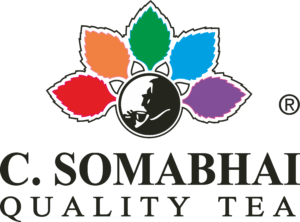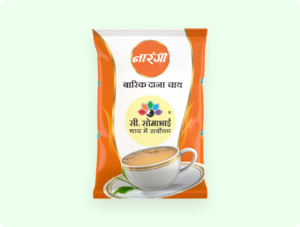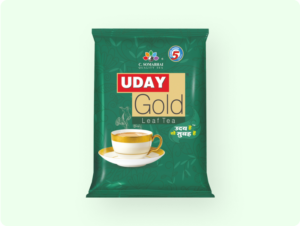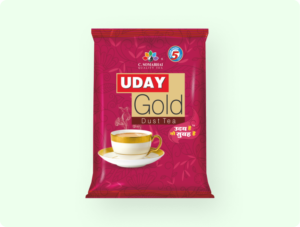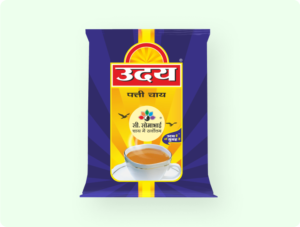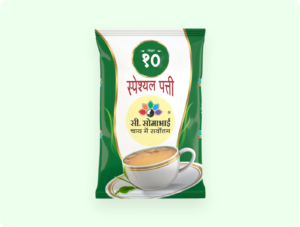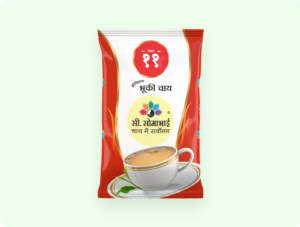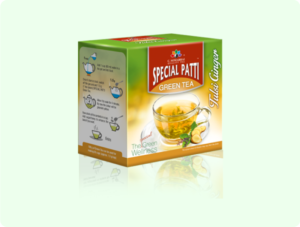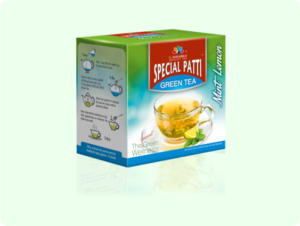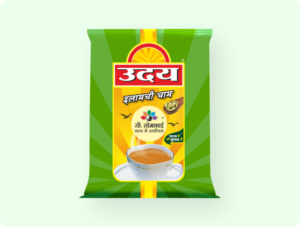Tea Production

Tea Manufacturing Process
The fundamental process in black tea manufacturing is the enzymic fermentation of certain organic compounds in the leaf. The various stages of tea manufacturing may be briefly described below:
MAKING OF CTC (CRUSH, TEAR, CURL) TEA
1. WITHERING:
This is the process by which tea leaves are induced to lose moisture substantially. Normally, this is carried out by spreading leaves thinly on troughs, through which warm air is circulated by fans. The average length of withering depends on the quality of the leaf peculiar to the region, outside humidity, and temperature.
2. CRUSHING TEARING CURLING (CTC):
When satisfactory withering has been obtained, the leaf is ready for rolling. The process twists the leaf, breaks it up, and expresses the juices. The CTC process of rolling is a comparatively rigorous one for the leaf, which is forced through a machine having two steel cylinders. The cylinders move in an inverse direction at a speed of 700 RPM and 70 RPM, CTC process of rolling is a comparatively rigorous one for the leaf, which is forced through a machine having two steel cylinders with marginal clearance between them. The leaf, as it passes consecutively through sets of three to four such machines, gets much reduced in size and its cells get ruptured for accelerated as well as intensive fermentation. The whole process leaves the leaf granulated. It gives much thicker liquor and yields more cups of tea per kg of leaves as compared to the Orthodox type of tea.
3. FERMENTATION:
Normally, the tea ferments or oxidizes for 60 to 100 minutes, depending on the leaf quality and climatic conditions. In South Indian conditions, the ambient humidity is lower, and the presence of dry air retards fermentation. Therefore, cool and humid conditions are essential to enable a larger retention time to produce blacker, grainier, and heavier teas.
4. DRYING:
The next process is known as drying. The objectives of drying are to arrest fermentation, remove moisture, and produce teas with good qualities. The mass of leaf is exposed to hot air when it passes through a chamber with perforated moving trays. The temperature of the air blowing through the chamber is maintained at temperatures between 100 and 130 degrees Celsius as its base range. It takes 15 minutes to half an hour to dry the leaf when the enzymes are fully activated. After completion of the drying process, the tea becomes fully black in colour.
5. SORTING AND GRADING:
Sorting is the operation in which tea particles from the bulk are separated into various grades of different sizes and forms, confirming trade requirements. The process of sorting has two objectives:
- To enhance the value
- To impart quality
6. THE BASIC SORTING PROCEDURE FOLLOWS A SET PATTERN:
While the tea is still relatively warm, it is first passed through a minimum of four slow speed electrostatic fiber extractors to clean it of floating fiber. Overly large pellets and flat pieces of caked tea are removed at the same time and kept aside for grinding and reconditioning. The next stage is to divide the bulk tea into grades by passing through the meshes of 24, 20, 16, 10, and 6 to get the grades. The grades generally produced are named Broken Orange Pekoe (BOP), Broken Pekoe (BP), Fanning, and Dust. The grade specifications are entirely artificial, though not completely arbitrary. After sorting and grading, the tea has to undergo a further cleaning process, which is necessary for removing any stalks, fibrous residues, and other foreign matter, that is separated out. Winnowing in some form or another is a routine practice, and according to the size and density of the particles, this separates the fanning and dust. It also carries away the fibrous residue and tea fluff, which have no commercial value as a grade.
7. STORAGE AND PACKAGING:
Tea is a markedly hygroscopic material, that absorbs moisture while cooling and sorting. Before packing tea, the accumulated series of daily batches of each grade are bulked and mixed to obtain the highest possible degree of unity. Before packing, tea is passed under powerful magnets to prevent possible pieces of iron from mixing with the tea. Packing is the process of preserving the product using the cheapest but most appropriate material, taking into account the product’s properties and the specific needs of the end user.
MAKING ORTHODOX TEA
1. WITHERING:
The withering for Orthodox is much harder than that of CTC. In orthodox withering, up to 54% of the moisture is allowed to evaporate. For this, more use of warm air is required.
2. ROLLING:
In the case of Orthodox tea, the withered tea leaf is rolled on tea rollers. A tea roller consists of three parts: the table, the box or jacket, and the cap used for applying pressure. During rolling, the leaf heats up considerably, especially with a heavy charge. Some degree of rise in temperature is due to the heat of fermentation, evolved by the chemical changes taking place in the leaf juices, and this is greatest during the first hour or so, after which it tails off. After rolling, the leaf is taken out and transported to the googie to separate the first fines. The fines that passed over the googie were taken straight for fermentation. The remaining that passes through the Googie is taken for the second roller and the third roll if required.
3. FERMENTATION:
The Orthodox tea ferments or oxidizes for 150 minutes, depending on the leaf quality and the climatic conditions.
4. DRYING:
The next process is known as drying and is similar to the one described in the CTC section. The only difference is that the temperature of the air blowing through the chamber is maintained at temperatures between 140 and 150 degrees Celsius as its base range, as firing at this temperature results in improved appearance and bloom.
5. SORTING AND GRADING:
The process of sorting and grading is the same as described in the CTC section. In the case of Orthodox sorting, the dried tea is passed through some additional machines to complete the sorting process. The grades generally produced in the case of Orthodox tea are named as follows: Tippy Golden Flowery Orange Pekoe (TGFOP), Golden Flowery Orange Pekoe (GFOP), Fanning Broken Orange Pekoe (FBOP), Broken Orange Pekoe (BOP), Golden Broken Orange Pekoe (GBOP), Fanning, and Dust. The grade specifications are entirely artificial, though not completely arbitrary.
6. STORAGE AND PACKAGING:
The storage and packaging systems are the same as described in the CTC section.
-
- Select options This product has multiple variants. The options may be chosen on the product page
-
- Select options This product has multiple variants. The options may be chosen on the product page
-
- Select options This product has multiple variants. The options may be chosen on the product page
-
- Select options This product has multiple variants. The options may be chosen on the product page
-
- Select options This product has multiple variants. The options may be chosen on the product page
-
- Select options This product has multiple variants. The options may be chosen on the product page
-
- Select options This product has multiple variants. The options may be chosen on the product page
-
- Select options This product has multiple variants. The options may be chosen on the product page
-
- Select options This product has multiple variants. The options may be chosen on the product page
-
- Select options This product has multiple variants. The options may be chosen on the product page
